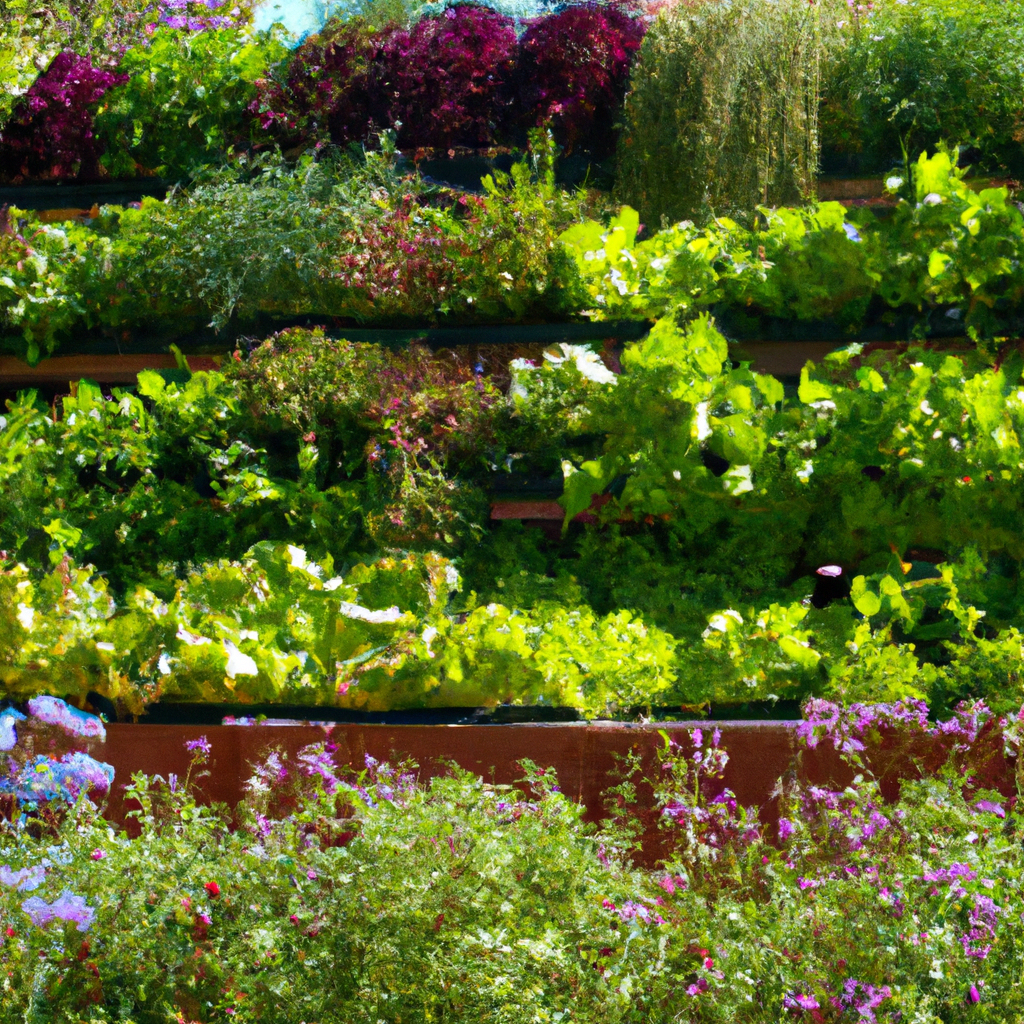In today’s fast-paced world, where space is limited and time is precious, finding innovative ways to maximize our resources has become a necessity. This holds true even for gardening enthusiasts who face the challenge of limited space in urban environments. Thankfully, there is a solution that can revolutionize your harvest and help you overcome these constraints – vertical gardening. In this comprehensive guide, we will explore the best vertical gardening techniques specifically tailored for small spaces, empowering you to create a flourishing oasis right at home.

Why Vertical Gardening?
Before we delve into the techniques, it’s important to understand the advantages of vertical gardening. By utilizing vertical space, you can grow a wide variety of plants, including flowers, herbs, vegetables, and even fruits, without the need for a sprawling garden. This method maximizes space efficiency, making it ideal for balconies, rooftops, and even indoor setups. Additionally, vertical gardening allows for better air circulation and sunlight exposure, resulting in healthier plants and increased productivity. So, let’s get started and unlock the secrets of successful vertical gardening!
Choosing the Right Structure
To embark on your vertical gardening journey, the first step is to select the right structure. There are several options available, each offering unique benefits. Let’s explore some popular choices:
1. Trellises and Arbors
Trellises and arbors are versatile structures that provide support for climbing plants such as tomatoes, cucumbers, and beans. They can be freestanding or attached to walls, offering a sturdy framework for vertical growth. When choosing a trellis or arbor, ensure it is made of durable material like metal or wood, capable of withstanding the weight of mature plants.
2. Vertical Planters and Pockets
Vertical planters and pockets are specifically designed for vertical gardening, allowing you to create a living wall of plants. These structures are often made of fabric or recycled materials and can be easily attached to walls or fences. They provide individual pockets for each plant, ensuring proper root aeration and water drainage.
3. Tower Gardens
Tower gardens are vertical hydroponic systems that enable you to grow plants without soil. These self-contained units utilize a nutrient-rich water solution, providing plants with optimal conditions for growth. Tower gardens are perfect for small spaces as they require minimal maintenance and can be placed indoors or outdoors.
Essential Factors for Successful Vertical Gardening
Now that you have chosen the perfect structure for your vertical garden, it’s crucial to consider a few key factors that can make or break your gardening success.
1. Sunlight Exposure
Plants require an adequate amount of sunlight to thrive. Before setting up your vertical garden, assess the available sunlight in your chosen location. Ensure that the plants you select can thrive in the given light conditions. Leafy greens, for example, require less sunlight compared to fruiting plants like tomatoes or peppers.
2. Soil and Nutrients
Choosing the right soil and providing essential nutrients is vital for the health and productivity of your plants. Opt for a well-draining soil mix enriched with organic matter. Additionally, regularly supplement your plants with organic fertilizers or compost to ensure they receive the necessary nutrients for optimal growth.
3. Watering and Irrigation
Proper watering is essential for vertical gardens. While the structure you choose may have built-in irrigation systems, it’s important to monitor the moisture levels and adjust accordingly. Overwatering can lead to root rot, while underwatering can cause plants to wither. Strive for a balance, ensuring the soil remains moist but not waterlogged.
Plant Selection and Care
Now that you have set up your vertical garden and considered the essential factors, it’s time to choose the right plants and provide them with proper care.
1. Selecting the Ideal Plants
When it comes to vertical gardening, choosing the right plants is crucial. Opt for compact varieties that are well-suited for vertical growth. Some popular choices include cherry tomatoes, strawberries, herbs like basil and thyme, and leafy greens like lettuce and spinach. Consider the specific requirements of each plant, including sunlight, water, and temperature preferences.
2. Planting and Maintenance
Plant your chosen varieties according to their individual needs, ensuring adequate spacing for growth. Regularly monitor your plants for signs of pests or diseases and take appropriate measures to keep them healthy. Prune and train your plants as necessary to encourage vertical growth and prevent overcrowding.
Harvesting and Enjoying the Fruits of Your Labor
The moment you’ve been waiting for has arrived – it’s time to harvest the fruits of your labor and savor the joy of homegrown produce.
1. Harvesting Tips
Harvest your crops when they reach their peak ripeness. For vegetables, this is typically when they are firm and brightly colored. Fruits should be picked when they are fully ripe but still firm. Harvest leafy greens when the outer leaves are large enough for consumption, allowing the inner leaves to continue growing.
2. Culinary Delights
With an abundance of fresh produce from your vertical garden, it’s time to get creative in the kitchen. Whip up delicious salads, stir-fries, or even homemade pesto using your homegrown herbs. The possibilities are endless, and the taste of freshly harvested, organic produce will elevate your culinary creations to new heights.
Conclusion
Vertical gardening is a game-changer for those with limited space who yearn for a thriving garden. By choosing the right structure, considering essential factors, selecting suitable plants, and providing proper care, you can revolutionize your harvest and create a lush oasis in even the smallest of spaces. Embrace the power of vertical gardening and let your creativity flourish as you unlock the secrets to bountiful harvests right at your fingertips.
So, why wait? Start your vertical gardening journey today and witness the transformation of your small space into a vibrant and productive haven. Happy gardening!
